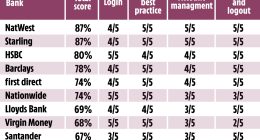
Opinions expressed by Entrepreneur contributors are their own.
Eight years ago, I started my Rise Lean from scratch. I had a mission: Helping people end a toxic relationship with food while losing weight effortlessly, using Asian wisdom. As a new online entrepreneur, I encountered a series of challenges in turning will into success.
First, I’ve never developed a coaching program. I’ve also never sold a thing. And considering the U.S. weight loss industry was incredibly saturated, I felt anonymous and unseen.
Today, my company magnetizes a consistent stream of ideal clients from around the world. And with its client acquisition, delivery and support systems built for scale, it’s seeing 20-40% growth month after month while working three days a week. This article will cover five major components that have shaped my company’s core foundation and readiness to beautifully thrive and scale.
Related: 7 Innovative Online Business Ideas for Digital Entrepreneurship
Create a remarkable and irresistible product
People want massive, real and lasting results that come quickly with the least amount of effort needed. If your product can bring them that experience, it’s remarkable and irresistible. When I first started, I immediately wanted my program to be that way. To ensure that, I interviewed 155 prospects to get a deep understanding of what they truly needed, took on 30 clients for a low price and built the first version of my company’s formula, informed by their experience, challenges and needs.
Throughout the past eight years, I’ve upgraded the course 12 times. Today, I still ask myself these two questions periodically:
- Can it be better?
- Can it be easier for my clients?
Turning your product into a masterpiece should be an unstoppable obsession. When you have a remarkable and irresistible product, it becomes a source of unshakable faith for you — even as you navigate market volatility.
1. Make competition irrelevant with an irreplaceable brand
I don’t prefer easy games, that’s why I headed into the weight loss industry despite the crazy competition within. What made me confident? A unique and strong brand identity, which is highly recognizable by my audience. If you can make your target audience fall in love with you, competition is irrelevant and you are irreplaceable. Whether you can have a successful brand identity depends on your ability to really understand your clients, articulate the problem they are facing and tell your story compellingly.
- Know your clients
Who are they? Can you describe their traits, stories, life stages, emotional states, pain points, dreams, fears and inner needs? If it’s challenging for you at this moment, do what I did. Collect customer feedback to get a better understanding of their needs.
- Articulate the problem
What exactly is the problem you solve? Be very specific and clear about it. On my website, I describe every main symptom and problem my target audience experience. I echo the thoughts in their head to become more relatable and drive a stronger connection.
- Tell your story
What’s your story? What makes you different and amazing? And what makes you irreplaceable for your audience?
During the first year of running my business, I intentionally hid my story of losing the 50 pounds I’d gained in the U.S. organically, using the wisdom and knowledge I gained from my travels in China. Huge mistake.
My personal, uniquely Asian experience is my golden competitive advantage. Because of it, I’m able to have a distinctive message in a highly crowded market based on real-life experience. As soon as I loudly shared my story in my own voice, my company’s growth spiked. Your story, when articulated well, can make your competition irrelevant. Check-in with yourself: Are you telling your story without holding back?
Remember, you don’t need to attract everyone — only the selected group of people you desire to work with. And your brand identity, when optimized, magnetizes only the right people and makes you irreplaceable to them.
Related: An Entrepreneur’s Guide to Startup Pricing Strategies
2. Price for success — for both you and your clients
The best pricing model is the one which sets both your clients and your business for success. There are two questions you need to ask yourself when thinking about your pricing:
- Question #1. What number reflects the level of commitment, services and outcomes from you?
For instance, if you run a life coaching program priced at $150, I’d imagine this is primarily an information product with minimal personalized coaching. On the other hand, if your offer is helping established businesses get into a seven-figure revenue through 1:1 coaching with a top expert, that implies a multiple five-figure price tag.
As always, your pricing sends the signal to your target client regarding what to expect, the level of services and the outcome delivered.
- Question #2. What number will inspire your clients to be serious about your offer and co-creating the desired outcome with you?
I priced the earliest version of my program at $500 during a test run. I quickly encountered one problem: A significant number of my clients weren’t showing up for the calls or doing their homework. After talking to them, I found they weren’t prioritizing the program.
I immediately realized two things: First, I’d attracted the wrong buyers who weren’t committed to the work. Second, my price didn’t convey the magnitude of the outcome and commitment from my end. Charging a price that attracted the wrong buyers meant low engagement, morale and client success rate. If I let that cycle continue, it’d kill my business and drain my passion for it.
Right now, I run my program with a pricing model that ensures I work with the most committed, responsible and coachable clients worldwide. They are incredibly enthusiastic about achieving the milestones set in the course. They are natural action-takers, accomplished in their professions and roles, humble and excited in front of the opportunities to have better life experiences. I never worry if they attend the coaching calls and do their homework. And deep, colorful and high-energy conversations keep flourishing during our live sessions, elevating the coaching experience to new dimensions.
This dynamic drives me to be the best version of myself whenever I do my work. I wake up in the morning looking forward to our calls. And I never ever feel tired. When combined, all these pieces maximize my clients’ success rate and happiness throughout the experience, which tirelessly fuels the success of my business and my sense of fulfillment as an entrepreneur.
In this experience, my clients and I contribute to each other’s victories.
#4. Build a multi-channel scaling ecosystem
Relying on just one funnel was the biggest risk I’ve taken in my business. Before 2020, I was only running Facebook ads which worked wonderfully for me. I was blinded by the ease and thought I’d never need a Plan B.
Then, Facebook implemented an upgrade. The next thing I knew? The same funnel no longer worked. Lead flow immediately stopped and it was scary because I thought I was going to lose my business.
My company bounced back in a few months and ever since I’ve started building a multi-channel lead generation ecosystem that generates multiple streams of leads in parallel. Here are the main components of this system I’ve built:
- Podcast interviews
How much does it cost to be seen (without clicking through) by 10 million ideal clients through ads? Easily $1 million. However, you don’t need to spend $1 million to reach millions of clients. Getting onto five to ten major podcasts in your niche can help you accomplish that, likely with greater results because a 30-minute podcast interview can gain you a lot more trust than an ad.
- Guest posts
They are similar to podcast interviews, in a different format.
Investing in SEO is worthwhile for those who desire to build an epic brand that stands out from a whole crowd of competitors. It can take eight to 12 months to take off. However, once established, it brings a consistent stream of ready clients throughout the year.
- Social media
My TikTok channel is where I talk to my audience “face-to-face.” It’s not a lead generation platform yet. However, it serves as a powerful source of confirmation for people — building trust before we talk.
Meanwhile, don’t forget your email list. People sign up for my email list through various sources, and I use it to build relationships and trust with my audience.
Building a multi-channel scaling ecosystem indeed requires a lot of work. But if you start today and be consistent, in three years, you’ll have a client-attraction system as powerful as a tank.
Related: Does Richard Branson’s 3-Day Workweek Actually Work?
Lastly, how did I achieve a three-day workweek lifestyle?
It’s because of all of these components above. Thanks to the multi-channel scaling system, I now have a semi-automated lead-generation system that brings me a steady flow of interested people. Having established organic funnels saves me from spending hours chasing after people.
Meanwhile, my brand message ensures that those who approach me are the type of clients you want to work with. It means I’m not wasting time speaking to irrelevant people. With a strong conversion rate, I can sustain this revenue without running ads. Because of that, I’m not spending hours and days creating, maintaining, refreshing ads and analyzing ad-related data. And since my program features an online group coaching experience, I can deliver well to my current clients without significantly expanding my coaching hours.
At this moment, most of my working hours during the week are split among doing group coaching calls (two hours a week), talking to potential clients (six to eight hours a week), and generating new content — whether it’s new TikTok videos or a product interview (around five hours a week). Every week, I write one to two email newsletters, with each taking between 15 minutes to an hour, thanks to how much I understand my audience. I use automation as much as possible for the remaining miscellaneous work. I also outsource work whenever needed.
All the groundwork, from product development to funnel building, was developed over eight years since the launch of my business. And I sure have had many 80-hour work weeks in the first couple of years. But thankfully, the majority of the work I did was intended to generate evergreen, compounding results. All of that has allowed me to enjoy my business along with many other things in life — from motherhood to traveling and equestrian.
This article is from Entrepreneur.com








